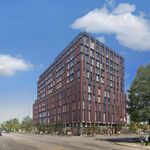A
AlvinofDiaspar
Guest
ahrvojic:
No, but within the context of this debate, I believe the needs of the motorists have been dealt with, considering the financial and urban planning cost of inaction regarding the Gardiner.
Which is why the range of proposed changes had been subjected to traffic modelling to death already, on multiple occasions. The system is complex, but it isn't beyond comprehension or analysis. Quite frankly, such an argument is less about straightforwardness or otherwise of such a project than maitenance of the status quo.
AoD
I don't recall that either, but then your solution is to let the completely interdependent cities of the GTA continue to uselessly struggle against each other out of spite?
No, but within the context of this debate, I believe the needs of the motorists have been dealt with, considering the financial and urban planning cost of inaction regarding the Gardiner.
Tearing down the Gardiner from Spadina may not seem like much, but seemingly small changes or events can be greatly amplified when tinkering with complex networks such as a city's transportation grid and that's why it isn't (or shouldn't be) as straightforward as it may seem.
Which is why the range of proposed changes had been subjected to traffic modelling to death already, on multiple occasions. The system is complex, but it isn't beyond comprehension or analysis. Quite frankly, such an argument is less about straightforwardness or otherwise of such a project than maitenance of the status quo.
AoD




